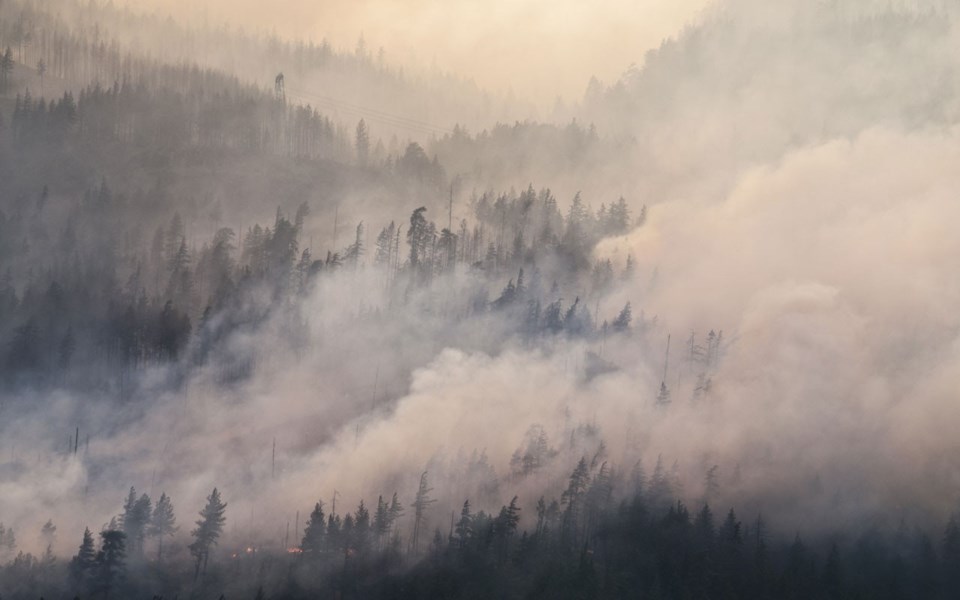In a previous column (Pique, May 2), I mentioned that Canada's current toxic political climate and discourse had muted discussion on the release of a long-awaited national climate assessment, and that I would backstop the cause by condensing what it contained.
Drawing on peer-reviewed literature and meteorological data, the work that resulted in Canada's Changing Climate Report was launched in 2017 by Environment and Climate Change Canada to answer the how and why of climate change in this country, and what we can expect for the future under both low- and high-emissions scenarios.
Evidence that Earth has experienced general warming since the mid-20th century as a result of human activities is overwhelming; these effects include increased surface air temperatures, sea-surface temperature, and ocean heat content. In addition, sea level has risen due to melting ice and the warming-induced expansion of ocean waters. Empirically, these changes can only be explained by accounting for human alteration of the land surface and the buildup of atmospheric greenhouse gas (GHG) and aerosol. In both current and future considerations, the key changes for Canadians to understand are in temperature, precipitation, weather extremes, snow and ice, and freshwater availability.
Temperature has increased in all regions of Canada and surrounding oceans. Although comprehensive regional information is available, in some cases back to the 1800s, nationwide records were only collected beginning in 1948. Since then, our annual average temperature has warmed by about 1.7°C, with higher increases in the North (about 2.3°C), the Prairies, and northern B.C. In all regions, the greatest warming has occurred in winter. For all seasons, the climate is projected to further warm under all plausible emission scenarios over the next two decades. Although it's hoped that immediate and continuing efforts to reduce GHGs will lower the rate of additional warming beyond this time frame, only a low-emission scenario is consistent with holding global average temperature increase to below 2C, in line with the Paris Agreement; this requires global emissions to peak almost immediately, with rapid reductions thereafter, an outcome whose likelihood is zero.
Annual precipitation has increased in all regions since 1948, with relatively larger increases in northern Canada and parts of Manitoba, Ontario, Quebec, and Atlantic Canada. Warming has also reduced snowfall as a proportion of total precipitation in Southern Canada, while seasonal snow accumulation has declined country-wide over the period 1981 to 2015. In future, annual and winter precipitation is projected to increase in all regions, with larger relative changes for the North, and a decrease in southern food-producing areas under a high-emission scenario.
Weather extremes are consistent with the increase in mean temperature: extreme heat is now hotter, while extreme cold is less frigid. Warming, drought and thinner snowpacks have led to increased risk of extreme wildfires in Western Canada. In future, extreme heat will become more frequent and intense, increasing the severity of drought and the risk of wildfire. Flooding in specific areas results from a number of factors, some of which may be tied to a warming climate but are, in any event, unpredictable. In contrast, more intense rainfalls will certainly increase flood risk in urban areas.
The most coherent picture of a warming climate (and most familiar to Whistlerites) can be seen in snow and ice features, and includes decreases in snow cover, duration of seasonal lake ice in the Arctic, and summer sea ice extent, as well as higher rates of glacier melt and permafrost thaw. Because further warming is now unavoidable, these trends will continue.
Seasonal availability of freshwater is also changing. Warmer winters and earlier snowmelt are combining to produce higher winter flows in rivers, while smaller snowpacks and loss of glacier ice will combine to produce lower summer flows and, ultimately, shortages. Despite more precipitation in some places, warmer summers in future will increase evaporation of surface water and further contribute to reduced water availability.
Globally, oceans have not only warmed, but become more acidic and less oxygenated, and Canadian maritime areas mirror this. Coastal flooding is expected to increase in many areas due to a combination of global sea-level rise and local land subsidence or uplift.
In summary, the combined effects of widespread warming are already evident in many parts of Canada, and will accelerate and intensify into the future. Further warming can only be limited if, in the next few decades, Canada and the rest of the world reduce carbon emissions to near zero, and also reduce emissions of other greenhouse gases substantially. Science tells us this is a critical period for the planet; living in it makes it our responsibility to ensure that this happens.
Leslie Anthony is a science/environment writer and author who holds a doctorate in reversing political spin.




